Pallet Inverter Safety Tips for South Korea Plants Facing Smart Factory Trends and Industry 4.0 Upgrades
Are you managing a manufacturing plant in a fast-paced market like South Korea? You feel the constant pressure to modernize and adopt smart factory technologies. But as you look at new equipment like automated pallet inverters, a major concern arises: safety. Integrating this powerful equipment into your production line brings new risks. If these risks are not managed correctly, they could jeopardize your entire Industry 4.0 investment. A single accident can cause serious injuries, stop production for weeks, and result in massive financial and reputational damage. Old safety checklists are not enough for the complexities of a connected, automated environment. I have spent my life in this industry, first as an engineer and now as a factory owner. I want to share what I've learned about making these upgrades successful and safe.
The most effective pallet inverter safety strategy for a smart factory combines advanced machine-level safety features, like light curtains and pressure sensors, with robust, plant-wide digital integration. This means connecting the inverter to your central Manufacturing Execution System (MES). This approach ensures that the machine not only protects the immediate operator but also communicates its status, potential hazards, and maintenance needs in real-time, making your entire Industry 4.0 ecosystem inherently safer and more efficient.
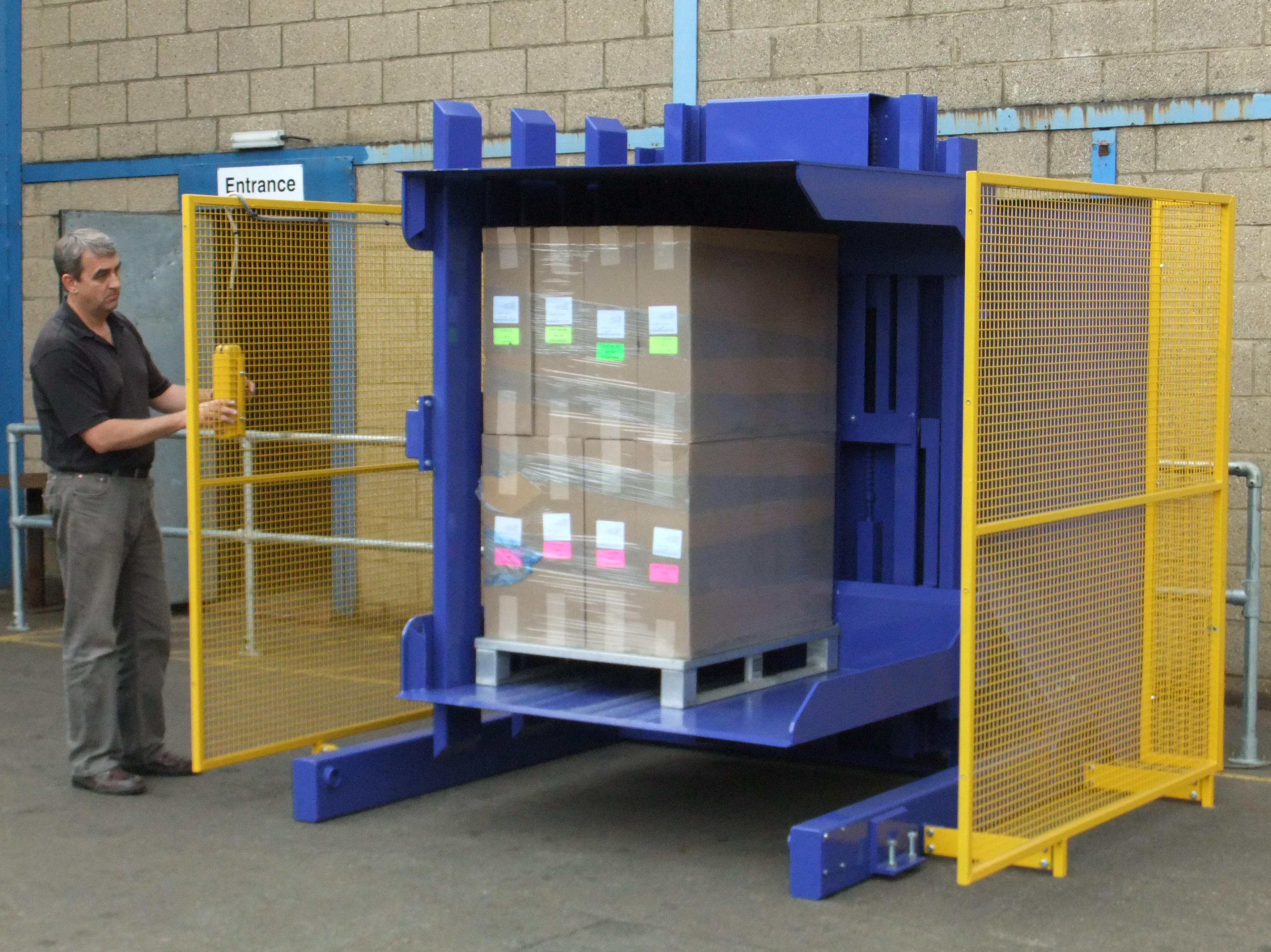
This integrated approach is the foundation. But to truly protect your team and maximize the return on your investment, we need to go deeper. The details are what separate a successful smart factory upgrade from a failed one. Let's break down the critical questions you should be asking to ensure your plant is both smart and safe.
How Can We Ensure Operator Safety Around Automated Pallet Inverters?
Your new automated pallet inverter is impressive. It can rotate a 1.5-ton pallet in under a minute, doing the work of several employees with zero strain. But this power and speed create new hazards. An operator accustomed to older, slower processes might not appreciate the new risks. They might step into a danger zone out of habit. A simple misstep could lead to a devastating accident. The traditional solution is to build large safety cages, but these fences can be clumsy. They create a physical barrier that can slow down workflow and hinder access for maintenance. So, how do you protect your people without creating a new production bottleneck? We need to think beyond simple cages and look at dynamic, intelligent safety solutions.
Ensuring operator safety around modern pallet inverters requires a multi-layered system. It starts with physical guarding but must be enhanced with advanced sensors like light curtains and 3D area scanners. These smart sensors create invisible safety zones around the machine. If a person or object crosses the beam, the machine stops instantly. This provides robust protection without the need for cumbersome physical barriers at every access point. Just as important are the people. Clear, simple operating procedures and rigorous training are essential to bridge the gap between human behavior and machine operation.
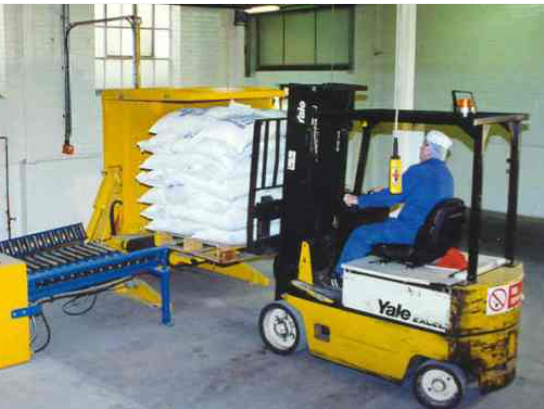
A Modern Approach to Guarding and Access
In the past, safety meant building a big fence. Today, especially in advanced manufacturing hubs like South Korea, the approach is more nuanced. The goal is to make the machine safe without isolating it from your workflow.
- Physical Guarding: Fences are still necessary. They define the machine's primary work envelope and prevent accidental entry. But modern guarding is modular. It includes access gates with interlock switches. If a gate is opened, the machine immediately enters a safe state. This is non-negotiable.
- Advanced Sensors: This is where smart safety comes in. Light curtains project a field of infrared light. If any beam is broken, the machine stops. These are perfect for access points where operators or forklifts need to interact with the machine. For larger, more complex areas, 3D safety scanners can monitor a wide zone and can be programmed with warning zones and danger zones. An operator entering the warning zone might trigger a flashing light and an audible alarm. Entering the danger zone triggers an immediate shutdown.
Here’s a simple breakdown of these options:
| Safety Method | Pros | Cons | Best Use Case |
|---|---|---|---|
| Fixed Fencing | High level of protection, prevents all access | Can hinder workflow, takes up space | Guarding the main body of the machine where access is rarely needed. |
| Interlocked Gates | Allows controlled access for maintenance | Can be bypassed if procedures are not followed | Designated entry points for operators or maintenance personnel. |
| Light Curtains | Allows open access for materials, no physical barrier | Can be affected by dust or reflective surfaces | Pallet entry and exit points where forklifts or AGVs operate. |
| Area Scanners | Highly flexible, covers large and irregular areas | More complex and expensive to install | Open-concept work cells where people and machines work in close proximity. |
The Human Element: Training is Not Optional
I have seen companies spend millions on advanced machinery only to have it underperform because they neglected training. A smart machine is only as effective as the person operating it. Your team needs to understand not just how to run the pallet inverter, but also how to work with it safely.
Your training program must cover:
- Standard Operating Procedures (SOPs): Step-by-step instructions for daily tasks.
- Lockout/Tagout (LOTO): How to safely de-energize and lock the machine before any maintenance or cleaning. In a smart factory, this can be a digital LOTO system integrated with your MES, which logs every lockout event.
- Emergency Procedures: What to do when an emergency stop is triggered. How to reset the machine safely after a stop.
- Understanding the Safety Systems: Operators must know what the light curtains are, how they work, and why they should never, ever be bypassed.
What Role Does Data and Connectivity Play in Pallet Inverter Safety?
You are investing heavily in an Industry 4.0 strategy to digitize your plant. You want data from every part of your production line. But what about your new pallet inverter? Is it just another isolated piece of equipment, a "dumb" machine on your "smart" factory floor? If your pallet inverter cannot communicate, you are flying blind. You are missing out on critical data that could prevent an accident or a costly breakdown. You won't know that a hydraulic pump is overheating until it fails, stopping your line and creating a potential safety hazard. The solution is to ensure your pallet inverter is a connected, data-generating asset.
Data and connectivity are the keys to transforming safety from a reactive to a proactive process. A truly smart pallet inverter is equipped with IoT sensors that monitor its health and operational status. By connecting the machine to your plant's SCADA or MES, you unlock powerful capabilities. You can track its every move, analyze its performance, and predict maintenance needs before a failure occurs. This real-time data stream provides the information you need to identify safety risks and operational bottlenecks, allowing you to fix them before they cause a problem. This is the essence of a safe, efficient smart factory.
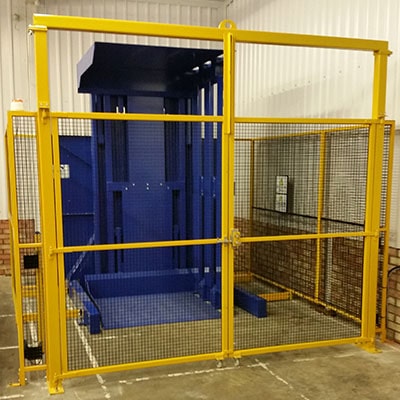
Predictive Maintenance Prevents Failure
Aging equipment is a major challenge. Components wear out, and failures happen. A smart pallet inverter uses sensors to monitor its own health. This is a game-changer for safety and uptime.
- Vibration Sensors: These can be placed on motors and bearings. A change in the vibration signature can indicate that a bearing is beginning to fail. You can then schedule maintenance during a planned shutdown, instead of having the bearing seize up and damage the machine during a production run.
- Temperature Sensors: These monitor the temperature of the hydraulic power pack and electrical cabinets. An overheating component is a clear sign of trouble and a potential fire hazard. The system can send an alert long before a critical failure.
- Pressure Sensors: In a hydraulic pallet inverter, maintaining correct clamping pressure is vital. If the pressure is too low, a 1-ton load could slip and fall. If it's too high, it could crush your product. Smart sensors ensure the pressure is always right and can alert you if there's a leak in the system.
This data allows you to move from a "fix it when it breaks" model to a "fix it before it breaks" model. For a factory owner aiming for 95% uptime, this is not a luxury; it's a necessity.
Real-Time Monitoring and Instant Alerts
In a traditional factory, when an emergency stop button is pushed, only the people in the immediate area know about it. In a smart factory, that event is instantly communicated. When a pallet inverter is connected to your network, you can set up a system of alerts.
Imagine these scenarios:
- An operator opens a safety gate while the machine is running. A notification is instantly sent to the shift supervisor's tablet.
- The machine's own diagnostics detect a fault. A maintenance ticket is automatically created in your system with specific details about the error code.
- The machine logs every time a light curtain is tripped. If it happens frequently at one spot, it might indicate a problem with your workflow or layout that needs to be addressed.
This level of visibility allows you to respond to safety events immediately and analyze patterns to prevent future incidents.
How Do We Choose a Pallet Inverter That Meets Both Safety and Production Goals in South Korea?
You need a pallet inverter that is perfectly safe. You also need one that is fast and reliable to keep up with your production demands. How do you find a machine that does both? It's a critical decision. If you choose the wrong machine, you might end up with a production bottleneck. Or worse, you could compromise on safety. Many suppliers will show you a long list of features. But few can explain how that machine will integrate seamlessly into your specific production line and safety ecosystem. The key is to look beyond the brochure. You must evaluate a machine based on its compliance with standards, its integration capability, and, most importantly, the expertise and support of the supplier.
To choose the right pallet inverter, you must start with a thorough assessment of your needs. The best choice will comply with both international safety standards, like CE, and local South Korean standards, such as the KCs mark. You need to analyze its technical specifications for speed, clamping pressure control, and automation to ensure it matches your product and throughput goals. Most importantly, you should view the supplier as a long-term strategic partner. A good partner will help you with this analysis, providing consultation on integration and support long after the installation is complete. They don't just sell you a machine; they provide a total solution.
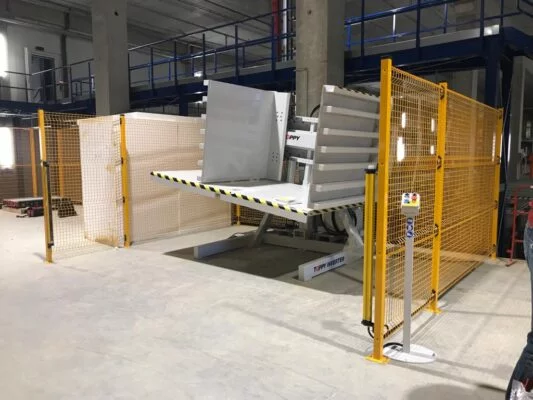
Compliance with Safety Standards is Non-Negotiable
Safety standards are not just guidelines; they are a promise to your workers that you are providing a safe workplace. A reputable pallet inverter manufacturer will design their machines to meet or exceed these standards.
- International Standards (CE/ISO): The CE mark (for Europe) and ISO standards (like ISO 13849 for safety-related parts of control systems) are globally recognized benchmarks for machine safety and quality. A machine built to these standards has undergone rigorous design and testing.
- Local Standards (KCs Mark): For plants in South Korea, the Korea Certification (KCs) mark is mandatory for certain types of industrial machinery. It certifies that the product has been tested and complies with Korean safety standards. Working with a supplier who understands and can provide equipment with the KCs mark is crucial. It simplifies the import and commissioning process and ensures you are compliant with local law from day one.
Matching Technical Specifications to Your Goals
Every factory is different. The right pallet inverter for a food processing plant is different from the one needed in a steel mill. You must analyze the technical details to ensure the machine is a good fit.
| Feature | Safety Implication | Efficiency & Production Implication |
|---|---|---|
| Adjustable Clamping Pressure | Prevents unstable loads that could slip or fall. Avoids crushing fragile products, which can create spills and hazards. | Allows you to handle a wide variety of products (from boxes of electronics to steel coils) with a single machine. |
| Variable Speed Control | Allows for a "soft start" and "soft stop," which improves load stability and reduces the risk of things shifting or falling. | Maximizes throughput. You can run the machine faster for robust loads and slower for more delicate ones. |
| Level of Automation | Fully automated systems reduce manual interaction, which is the number one source of accidents. | Enables seamless integration with your conveyors and AGVs, creating a "lights-out" logistics flow and reducing labor costs. |
| Build Quality & Components | High-quality hydraulics, motors, and electrical components are less likely to fail unexpectedly, preventing accidents and downtime. | A well-built machine runs more reliably and for longer, increasing your overall equipment effectiveness (OEE). |
When you speak with a supplier, ask them why they chose a specific component. A good engineer, a good partner, will be able to tell you.
My Insight: Why Safety is the Foundation of a Successful Smart Factory Upgrade
Many business owners get excited about Industry 4.0. They see the potential for incredible productivity gains through data, AI, and automation. It's easy to get caught up in the technology. But in my journey, from working on the factory floor as an engineer to building my own successful packing machine factory, I’ve seen companies make a critical mistake. They invest millions in "smart" technology but have it all brought to a standstill by a single, preventable safety incident. They focused so much on the "smart" part that they forgot the most important word: "factory." And the first and most important job of any factory is to be a safe place for its people.
My experience has taught me one thing above all else: a smart factory is a safe factory. It’s that simple. When you invest in advanced safety systems for equipment like a pallet inverter, you are not just adding a cost or checking a box for a regulator. You are making a direct investment in your most important key performance indicators: uptime, employee morale, and operational stability. A safe factory has fewer stops, and its people are more focused and engaged. Safety is not a barrier to the productivity promised by Industry 4.0; it is the very foundation that makes it possible.
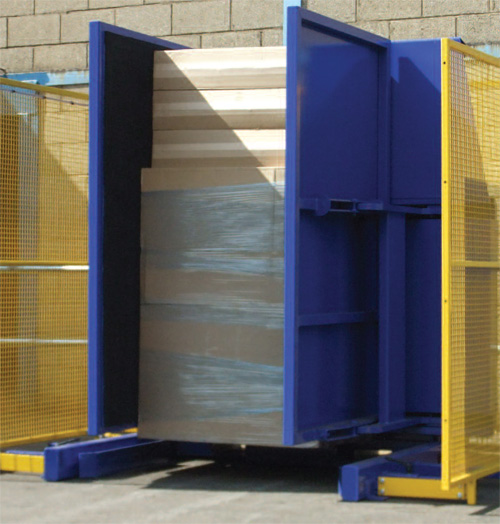
A Personal Story: The True Cost of an Unsafe System
I remember working with a client who runs a steel wire plant, an operation with many of the same pressures Javier faces. They had just installed a new, highly automated packing line. It was fast and efficient. But to save on the initial cost, they opted for basic safety guards and decided against fully integrating the safety system into their plant's network. A few months later, an operator tried to clear a small jam without following the full lockout procedure. He bypassed a simple gate sensor, thinking he could be quick. He suffered a serious hand injury.
The consequences were immediate and severe. The operator was hurt, which was terrible in itself. But the entire line was shut down by government inspectors for two weeks. The direct cost of the downtime was enormous. The investigation took up weeks of management time. Morale on the factory floor dropped. The company had bought a machine to increase productivity, and it ended up causing the biggest production loss of the year. We later worked with them to re-engineer the line. We installed integrated light curtains at key points and a proper digital Lockout/Tagout system that was tied directly to their MES. Now, no one can open a gate without the system logging the event and confirming a full machine stop. Their uptime didn't just recover; it improved by over 10% compared to before the accident. Why? Because the operators trusted the system. They felt safe. And a confident, safe team is a productive team.
Safety as Your Competitive Advantage
In a competitive market for talent, like South Korea, your reputation as an employer matters. The best, most skilled people want to work for companies that value their well-being. A strong safety culture is a powerful tool for attracting and retaining top talent. When your employees know that you have invested in the best technology to protect them, they are more engaged, more loyal, and more likely to contribute to a culture of quality and continuous improvement.
Investing in safety is not about compliance. It is about excellence. It shows your employees, your customers, and your competitors that you are serious about building a sustainable, world-class operation. It is the smartest investment you can make in your journey toward Industry 4.0.
Conclusion
Integrating pallet inverters into your smart factory upgrade is about more than just technology. It demands a holistic focus on advanced safety systems, comprehensive training, and choosing a supplier who acts as a true partner. Remember, safety is the cornerstone of achieving the efficiency and ROI you expect.



